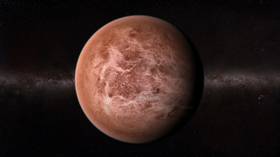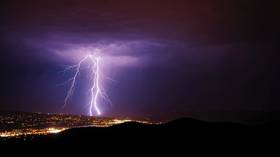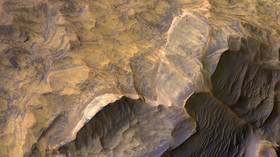Earth’s atmosphere once as toxic as Venus, researchers say, after melting floating marbles with lasers for study

The early atmosphere of our planet was as toxic as that of present-day Venus, as gases escaped from a magma ocean during Earth's development, scientists have found, after melting hovering marbles with lasers for their research.
According to scientists, an object the size of Mars likely crashed into young Earth in an impact that released enough energy to melt down the early planet’s entire mantle – the layer between the core and crust – turning it into magma.
This mammoth event would have stripped most of Earth’s then-atmosphere, to be replaced by a new one, dominated by carbon dioxide and with little nitrogen - much like the atmospheric composition of Venus today, and similar to Mars.
Also on rt.com Newly discovered MAGNETAR signal alters understanding of mysterious deep-space radio burstsThe findings come from a study by Paolo Sossi and his team at ETH Zurich in Switzerland, whose paper, published in Science Advances on Wednesday, looked at “Earth’s magma ocean and its Venus-like early atmosphere.”
To understand the atmosphere of early Earth the team set out to recreate those conditions by floating a small piece of rock over a gas jet and then melting it with a 1900°C laser.
“This little melted marble floating at almost 2000 degrees is sort of a miniature Earth in its molten state,” Sossi told New Scientist.
By using different gases in the jet to suspend the piece of molten rock, the researchers recreated varying atmospheric conditions, allowing them to see which one most closely corresponded to samples of Earth’s mantle and the geological record.
The team found that once the atmosphere released from early Earth’s magma ocean cooled, it would have “resembled that of present-day Venus.” This, they say, implies that the present differences between Earth and Venus’s atmospheres, reflect what happened after the two planets formed.
Our planet is big enough that gravity keeps its atmosphere in place, unlike Mars, while Earth’s position in the solar system also makes it sufficiently cool compared to Venus, the second planet from the sun.
This means that, unlike Venus, water remains in liquid form on the Earth’s surface and can absorb carbon dioxide from the atmosphere to prevent the planet overheating - and, crucially, create and maintain the conditions necessary for supporting life.
Like this story? Share it with a friend!















